2 Tips for the First Year Gardener
Living here in the Pacific Northwest during the spring and the first part of summer we are blessed with God’s sprinkler system: drizzle. (We don’t know what a truly hard rain is in Washington; we just get a continuous stream of drizzle which contributes to all of the loverly green we have most of the year.) So if you’ve ever planted seeds or transplanted little seedlings here, there is virtually no need to water at first. This is good AND bad. Nice that we save on our water bill for a while, but I learned a lesson the hard way last year.
Last year was our first real attempt at having a vegetable garden. We grew tomatoes, corn, broccoli, and cauliflower from starts along with planting radishes and lettuce from seed. It was fun to have our garden, and the kids loved it! We were able to harvest everything but two things. We don’t know what happened to the cauliflower, but us not eating the broccoli was all my fault. We definitely learned a lot, but the biggest lesson I learned last year was that I need to look at the garden, and look at it DAILY. Not weekly, not every three days, and not just when I think about it, but daily.
Not only do we need to look at the garden daily to see if we are having any slug or bug issues, but we need to see if the produce is ready to be harvested. Last year this is exactly why we totally missed out on eating broccoli. I had bought some broccoli plants, planted them, and about a month and a half later they were nearly ready to be harvested. Then Jonathan went on a short trip for a few days, so I thought I would wait to harvest them until he got home. Ha! Bad idea! If broccoli is ready to be harvested, don’t wait! I let it go an extra three days or so, and it started flowering big time. Learn from my mistakes!
 This year our friend Jay introduced us to Back to Eden gardening, so we added wood chips and are experimenting this year with gardening without water or weeds. So below is a picture of our prepared area. I will let you know the progress and see how much we actually need to water or weed this year.
This year our friend Jay introduced us to Back to Eden gardening, so we added wood chips and are experimenting this year with gardening without water or weeds. So below is a picture of our prepared area. I will let you know the progress and see how much we actually need to water or weed this year.
Also new this year: I am trying to grow potatoes in some containers. In early April I took some potatoes that had sprouted from the ones I had bought. By the way, conventionally grown potatoes take longer to sprout because they are sprayed with a chemical to prevent/slow down the sprouting process. So I bought a couple of bags of organic potatoes, and in both instances I had little sprouts in less than two weeks.
My kids said a couple of weeks ago that the potatoes were growing. I thought they were talking about the ones I had just planted earlier that week (Mid-May), and thought, “Yeah, right.” I didn’t know that they were talking about the ones I planted at the beginning of April. I was thrilled at what I found pictured here below!
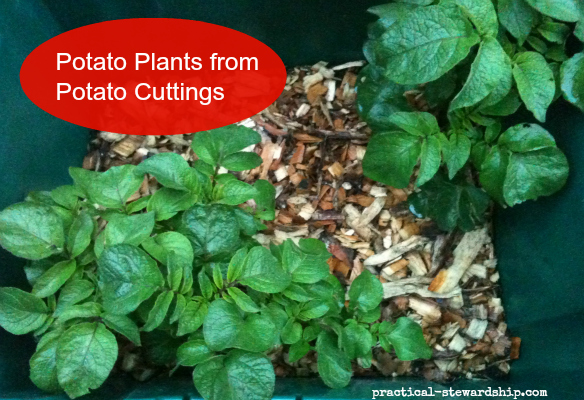 Now I have got to “hill” them. All I’ve learned about growing potatoes is here if you are interested in learning more.
Now I have got to “hill” them. All I’ve learned about growing potatoes is here if you are interested in learning more.
This year we planted lettuce in some containers at the end of February since it’s a cool weather crop. At the end of March I almost gave up on them, and then I saw some little sprouts. The plants are still pretty teeny tiny right now. I thinned them since the back of the package says to thin them to one plant every 2 inches. I didn’t have the heart to throw the extra starts away, so I planted them in our wood chip area. In the almost two weeks of being planted, the transplants didn’t wilt or anything, but the slugs and snails thought Thanksgiving had come early, so yeah, they’re gone. We’re thinking of having Jonathan lay some copper around the bed to keep the slimy critters away.
Mistake number two I made was not to thin my seedlings when appropriate. I had a hard time last year thinning the lettuce. I was so excited that the seeds actually came to some kind of fruition, that the lettuce plants crowded each other. I couldn’t bring myself to pull some of them out. I think the result was a smaller lettuce plant and a smaller root system, which I think caused them to fry when they got too hot. The lettuce could have had a way longer growing season.
Right after Mother’s day we planted five small tomato plants. We also planted spinach, onions, and cauliflower from seed.
So my two tips for the beginning vegetable gardener:
- Look at your garden DAILY!
- Thin the seedlings when appropriate.
Yes, we are growing a wee bit of our own food to help save some money, and, Lord willing, we will harvest some organic vegetables. But there is a bigger blessing in all of this. By growing plants from seeds we also see in practice a lesson of God bringing new life through something that was dead, as our pastor has been talking about in church. A seed has to die before it can bring forth new life: “Truly, truly, I say to you, unless a grain of wheat falls into the earth and dies, it remains alone; but if it dies, it bears much fruit” (John 12:24). In this we see the perfect picture that when we die to self, we help bring life. When we die to self, put aside our desires and serve our families with our time, strength, energy and patience, we put others before ourselves, and we help bring life. May we all have life abundant and life in the garden, too!
What are you growing this year? How does your garden grow?
Have you read? Gardening without Water or Weeds
4 Re-purposed Items for the Garden
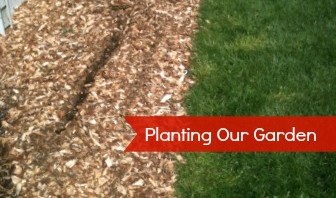
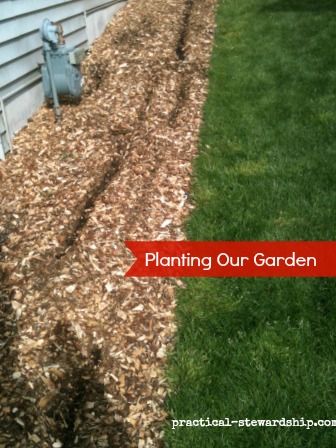
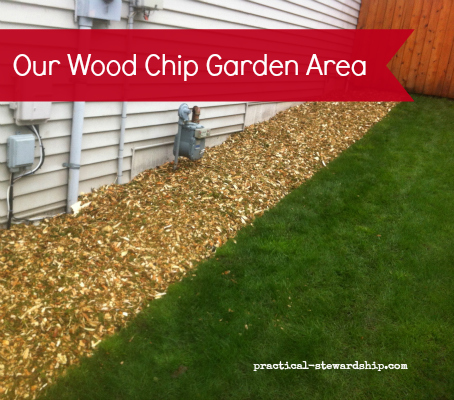
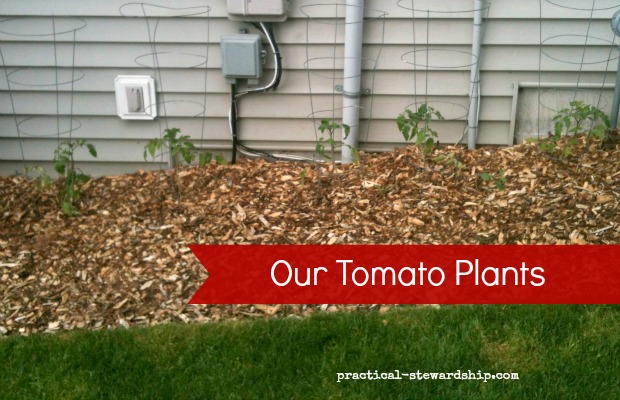
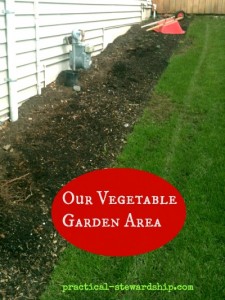
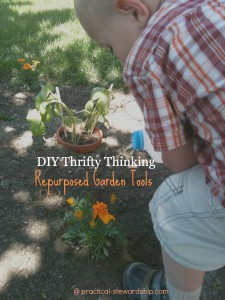
I am pinning this so I can refer back to it. I love the idea of being a gardener, but so far my skill doesn’t match my dream!
Hi May! I understand. I’ve been a slow vegetable gardener learner, and I still have so much to learn. Thank you for visiting!
Be careful about putting woodchips next to the house. We did that many years back and totally regret it. It will not be long till you have a carpenter ant infestation. They love rotting wood and the warmth next to your home.
Hi Kathy, Do you think that it matters if your house is not made of wood? We have vinyl siding.
We are doing Back to Eden gardening, too, and I’ve already noticed a big difference from my earlier watering slave days. The wood mulch does such a great job storing the water for later use! Additionally, we’ve found that both leaf and wood mulch make weeding a thing of the past.
We’re transforming a (new to us) very overgrown, crazy yard, so all the wood mulch everywhere looks kind of crazy right now, but we’re already having better harvests than I experienced the past two years using no mulch or just leaf mulch.
Thanks for sharing your tips. I’ve also found info in Square Foot Gardening helpful, in terms of planting seeds at the spacing recommended to thin them. Then you have much less waste and less need to thin.
Blessings!
Hi Laura, That’s exciting to know about your water use, or lack thereof! You are welcome for sharing, thanks for visiting, and blessings to you and your garden, too!
your garden looks great. I tried once a month ago, the birds ate all my seeds. GOtta try again.
Hi Cynthia, Thanks! Sorry to hear about the birds eating the seeds! Frustrating! Yes, try again! Have a great weekend!
Sonja, I heard that slugs are attracted to grapefruit peals, but that something in the peel kills them. You are suppose to half the grapefruit, scoop out the fruit, and then set out the “bowls” in the area the slugs are. I have not tried this yet, but I want to!
Hi Nadene!! I am glad you mentioned the grapefruit, because I saw that on pinterest at the beginning of this year and totally forgot about that! I’d rather use our garbage before buying something new, so we’ll give it a shot. Now I have to see if we have a grapefruit left or not. Have a great weekend!